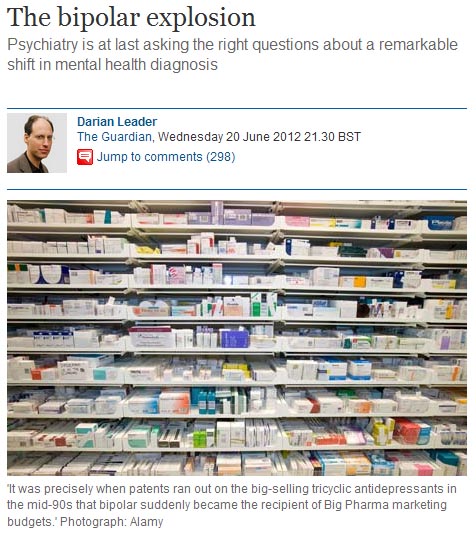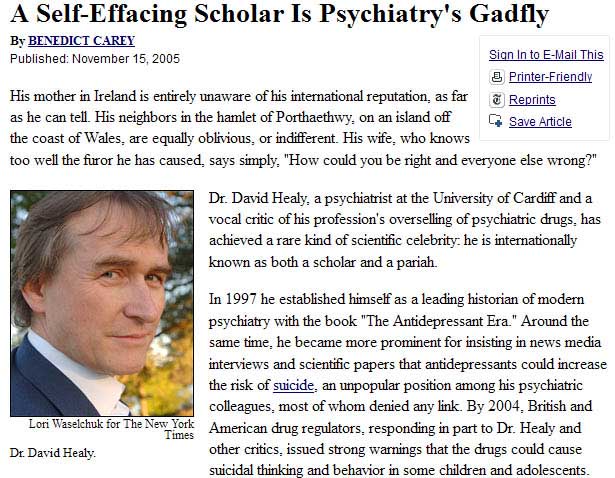Darian Leader on Psychosis introduced by Ajay Khandelwal
Introduced by Ajay Khandelwal, psychoanalyst Darian Leader gives the Lambeth and Southwark MIND Psychotherapy Clinic 2016 Annual Lecture – On Psychosis.
Introduced by Ajay Khandelwal, psychoanalyst Darian Leader gives the Lambeth and Southwark MIND Psychotherapy Clinic 2016 Annual Lecture – On Psychosis.
Carina Hakansson speaks about the groundbreaking ‘Open Dialogue Approach’ to the in-patient treatment of psychosis in Sweden. [Click here to view the talk on YouTube]
[Click here to read the whole article on the Guardian Website]
If the postwar age of anxiety was supposed to have ended 30 or 40 years ago, a swath of media articles now suggest a dramatic comeback. A new and widely reported study claims a massive increase in anxiety disorders in the UK, with an estimated 8.2 million sufferers compared to 2.3 million in 2007. The pressures of modern life, we are told, must play a large part here, with job stress aggravating the difficulties of urban populations.
The focus on socio-economic conditions is surely a good thing. In the 1980s, Thatcherism encouraged a redrafting of work-related problems as psychological ones. As each person became a unit of economic competition, it wasn’t the market’s fault if they didn’t get a job but their own. Injustice in the marketplace was glossed over as individual failure.
Hundreds of books and articles have questioned this without gaining media exposure, so why the visibility of the new research? I was puzzled to find not a single sentence in the report linking the supposed increase in anxiety to social causes. In fact, there was no explanation at all, and the headline-grabbing prevalence rate for the UK was estimated from Iceland, Norway and Switzerland.
Here, we find a perfect expression of the new mental hygiene movement. Anxiety is grouped together with dementia, stroke and neuromuscular conditions as a “brain disorder”, and the authors urge an approach that uses “comparable methodologies for both mental and neurological illness”. Disorders are listed in terms of their cost to the economy rather than to individual lives, families and communities. […]
[click here to read the whole article on the Guardian website]
Meaning has been stripped from the diagnostic enterprise, in favour of pure external classification.
Clinicians who want to pursue a dialogue here find that they are allocated less and less time with their patients by a bureaucratic and managerial healthcare system. The tragedy is that this deprives us of having any authentic understanding of the symptom, and it introduces a rigid, normative vision of human behaviour. We can know what is a disorder, and what isn’t, without listening to what the person has to say.
Yet nail biting might be a totally irrelevant detail for one person, a terrible curse or a pleasurable habit for another. Classifying such behaviour externally as a symptom, without taking into account what it means to that person, is profoundly inhuman. It is yet another vehicle for imperatives telling us how we should live and how we shouldn’t.
 [Click here to read the whole article on the Guardian site.]
[Click here to read the whole article on the Guardian site.]
Discussion this week about appalling cuts to mental health services focused on the diagnostic categories “depression” and “anxiety”. Though there are good reasons to question and critique the use of these terms, they have drawn attention away from a major redrafting of diagnostic and prescription trends. While it is claimed that up to one in four people will suffer from depression at some point, over 25% of these subjects are now likely to receive a diagnosis not of depression but of bipolar disorder.
In the early 20th century the prevalence of manic depression was put at less than 1% of the population, but this figure exploded with the ramification of the bipolar categories. If bipolar 1 was often equated with classical manic depression, bipolar 2 lowered the threshold dramatically, requiring merely one depressive episode and one period of increased productivity, inflated self-esteem and reduced need for sleep.
Bipolar 2 and a half, 3, 3 and a half, 4, 5 and 6 soon followed. Today there is even “soft bipolar”, which means a patient “responds strongly to losses”. The World Health Organisation deems bipolar the sixth main cause of disability for people aged 15-44. In children, the diagnosis has increased by over 400%.
Historians of psychiatry have all made the same observation: it was precisely when patents ran out on the big-selling tricyclic antidepressants in the mid-90s that bipolar suddenly became the recipient of Big Pharma marketing budgets. Websites helped people to diagnose themselves; articles and supplements appeared all referring to bipolar as if it were a fact; and nearly all of these were funded by the industry.
 [Click here to read the whole article on the Telegraph site.]
[Click here to read the whole article on the Telegraph site.]
Dr. David Healy, a psychiatrist at the University of Cardiff and a vocal critic of his profession’s overselling of psychiatric drugs, has achieved a rare kind of scientific celebrity: he is internationally known as both a scholar and a pariah.
In 1997 he established himself as a leading historian of modern psychiatry with the book “The Antidepressant Era.” Around the same time, he became more prominent for insisting in news media interviews and scientific papers that antidepressants could increase the risk of suicide, an unpopular position among his psychiatric colleagues, most of whom denied any link. By 2004, British and American drug regulators, responding in part to Dr. Healy and other critics, issued strong warnings that the drugs could cause suicidal thinking and behavior in some children and adolescents.
But Dr. Healy went still further, accusing academic psychiatry of being complicit, wittingly or not, with the pharmaceutical industry in portraying many drugs as more effective and safer than the data showed.
He regularly gets invitations to lecture around the world. But virtually none of his colleagues publicly take his side, at least not in North America.